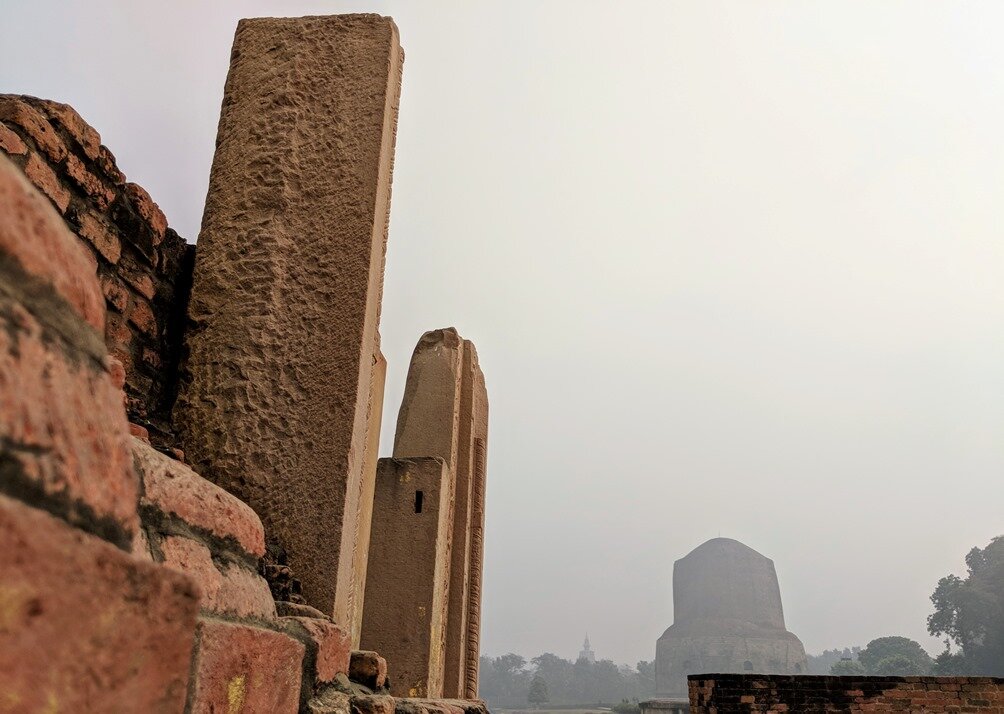
Sarnath
Where the Buddha set rolling the unexcelled wheel of Dhamma
Sarnath (also previously known as Mrigadava, Rishispattana and Isipatana) is the Deer Park where the Buddha delivered his first discourse known as the Dhammacakkapavattana Sutta (discourse on Turning of the Wheel of Dhamma) and founded the Sangha. “Isipatana” means “the landing place of the rishis or ascetics” in Indian language and it was called thus because the rishis who live/meditate in the Himalayas used to ‘appear/land’ in the deer park from the Himalayas to collect alms, using their psychic powers.
Major landmarks, monuments, and places of interest in Sarnath include:
Deer Park or Migadaya, also called Isipatana or Rishi’s Landing Place. Within its serene ground are sacred ancient monuments.
Dhammek Stupa
Dhammarajika Stupa
Mulagandhakuti
Asokan Pillar
Sunken Shrine of Pancayatana
Mulagandhakuti Vihara
Sarnath Archeological Museum
Mahabodhi Society
Chaukhandi
Temples and Monasteries in Sarnath
This page mainly covers the interests in the Deer Park area.
Major Historical Events
After spending seven weeks in the seven places in Bodhgaya following his enlightenment, the Buddha was undecided about teaching the Dhamma to others as he realized that it was too profound and hard to discover, and others would not understand him. The Blessed One upon listening to Brahma Sahampati’s appeal and out of compassion, decided to go to Benares to preach to the Panca-vaggi (Five Ascetics - Kondanna, Vappa, Bhaddiya, Mahanama and Assaji). The Five Ascetics had once served him for 6 years, but left him after he abandoned the path of self-mortification.
He arrived at the Deer Park on the full-moon day of the month of Asalha, exactly two months after Vesak. When the Five Asetics saw the Buddha coming in the distance they made a pact not to welcome him because of his abandoning of the austerities, but as soon as the Buddha approached, they found themselves unable to keep their pact and began to serve him.
The Buddha was able to convince them of his attainment.
That very night, the Buddha delivered the historic First Discourse, the Dhammacakkappavattana Sutta (Discourse on Turning the Wheel of Dhamma) which led to Kondanna attaining the first stage of Enlightenment at the end of the discourse. The remaining four ascetics attained the first stage of enlightenment successively over the next four days. Later, the Buddha preached to them the Anattalakkhana Sutta (Discourse on the Characteristics of Not-Self) hearing which they all attained Arahantship or full enlightenment.
In Sarnath too, the Buddha converted the rich man Yasa and his 54 friends, who also became Arahants. Later, the Buddha dispatched them in various directions to propagate the Dhamma, with each to go a separate way. Thus, Sarnath became famous as the place of the First Discourse, as well as the founding of the Sangha (Monkhood).
Dhammek Stupa
While boring a shaft in the centre of this stupa in search of relics, Cunningham found remains of an earlier stupa of Mauryan bricks. It was probably raised by Asoka when he visited Sarnath. No bodily relics were found inside this stupa, but a slab with a summary of Lord Buddha’s teachings ‘ye dhamma hetuppabhava, etc.’ in the characters of the 6th and 7th century was discovered. This appears to suggest its close association with the Buddha’s Dhamma. This summary is also known as the Buddhist creed and was the answer one of the first five ascetics (Venerable Assaji) gave to Venerable Sariputta (who later became the Buddha’s right hand chief disciple) when the latter met him and asked Venerable Assaji what his teacher’s teachings were. Venerable Assaji then gave a short explaination of the Buddha’s teachings by saying:
“Ye Dhamma Hetupabhava,
Tesam Hetum Tathagato Aha.
Tesam Ca Yo Nirodho Ca,
Evam Vadim Maha Samano.’
Of Phenomena that arises from cause
Their arising and Passing Away
Thus said the Great Samana
The Archaeological Survey of India used this finding to support its claim that this spot marks the site of the First Discourse.
However, it is not possible to confirm this claim as another site namely: ‘Dhammarajika stupa’ (also located in the same park in Sarnath and featured below), is believed by Burmese monks to be the site of the First Discourse. For pilgrims, the best thing to do is to treat the whole area as the place of the First Discourse and to be mindful at all of the holy shrines.
Click image to see detailed carvings (desktop)
Foggy day
Sun set
Dhammarajika Stupa
The Dhammarajika stupa was believed to be built by King Asoka to enshrine the bodily relics of the Buddha at the time of his re-distributing the relics from the seven original stupas and enshrining them in a number of other stupas at different places (said to number 84,000 in total, to signify the 84,000 segments of the Buddha’s Teaching). This fact supports the view that the site must have been the venue of a very significant event such as the First Discourse.
View of both Dhammarajika stupa (foreground) and
Dhammek Stupa (in the distance)
Mulagandhakuti
Ruins of the Main Shrine, site of the Mulagandhakuti or First Perfumed Chamber where the Buddha spent the first rains-retreat. According to the Dhammapada Commentary, it was donated by a rich man, Nandiya, and as soon as the Buddha accepted the gift, a celestial mansion arose in Tavatimsa Heaven awaiting its owner, Nandiya.
The area between the ruins of the Main Shrine and the Dhammarajika stupa is believed to be the site of the Cankama, the promenade where the Buddha did his walking meditation. This belief is supported by the discovery of the famous colossal Bodhisatta image installed at this site by Bhikkhu Bala of Mathura.
Sunken Shrine of Pancayatana
The Sunken Shrine, made of terra cotta bricks and modeled to resemble one of the four square temples of the Gupta period called ‘pancayatana’ or ‘five bases’. The site of this Sunken Shrine of Pancayatana is believed by the Burmese to be the place where the Buddha preached to the rich man Yasa.
Other structures in Sarnath park
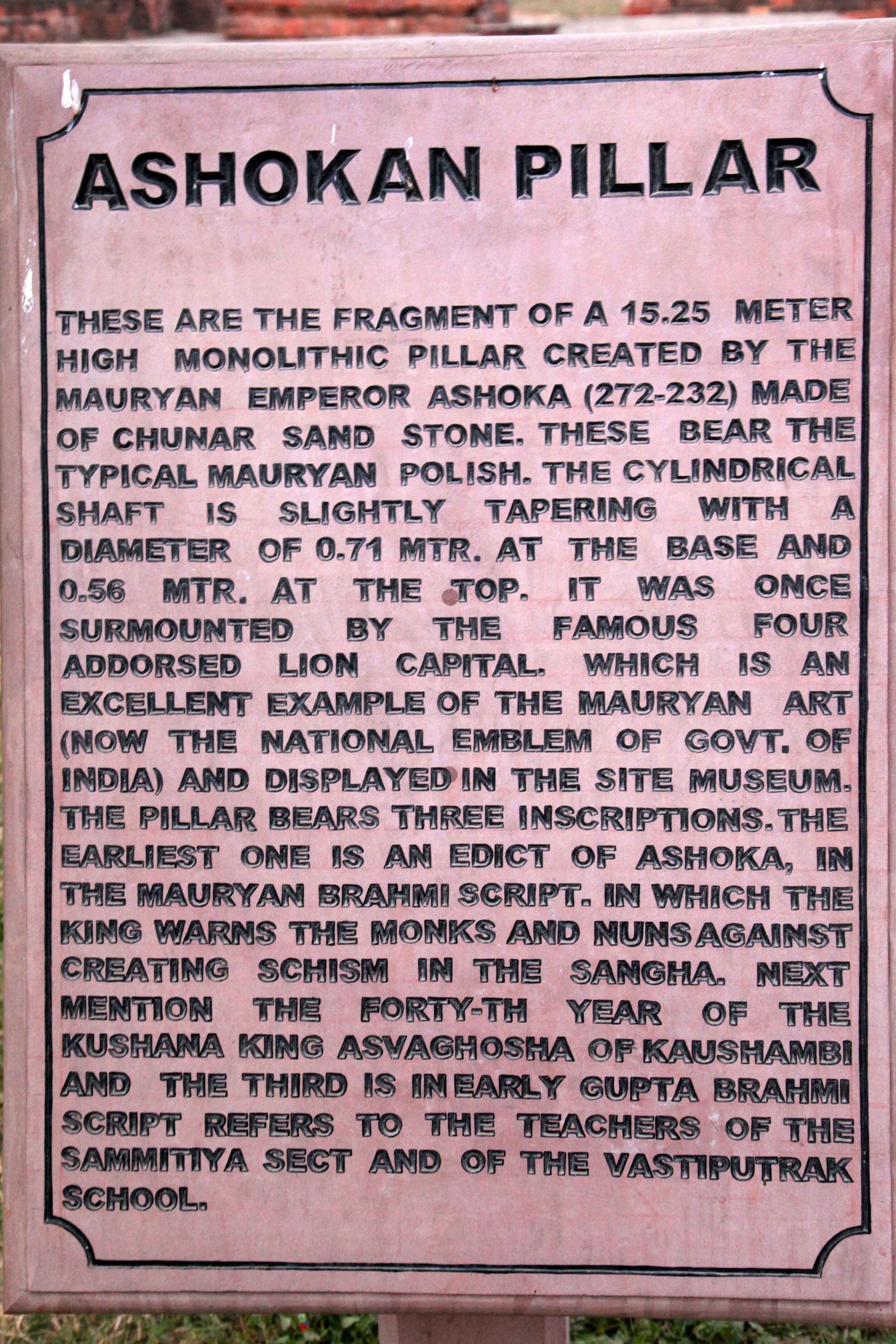
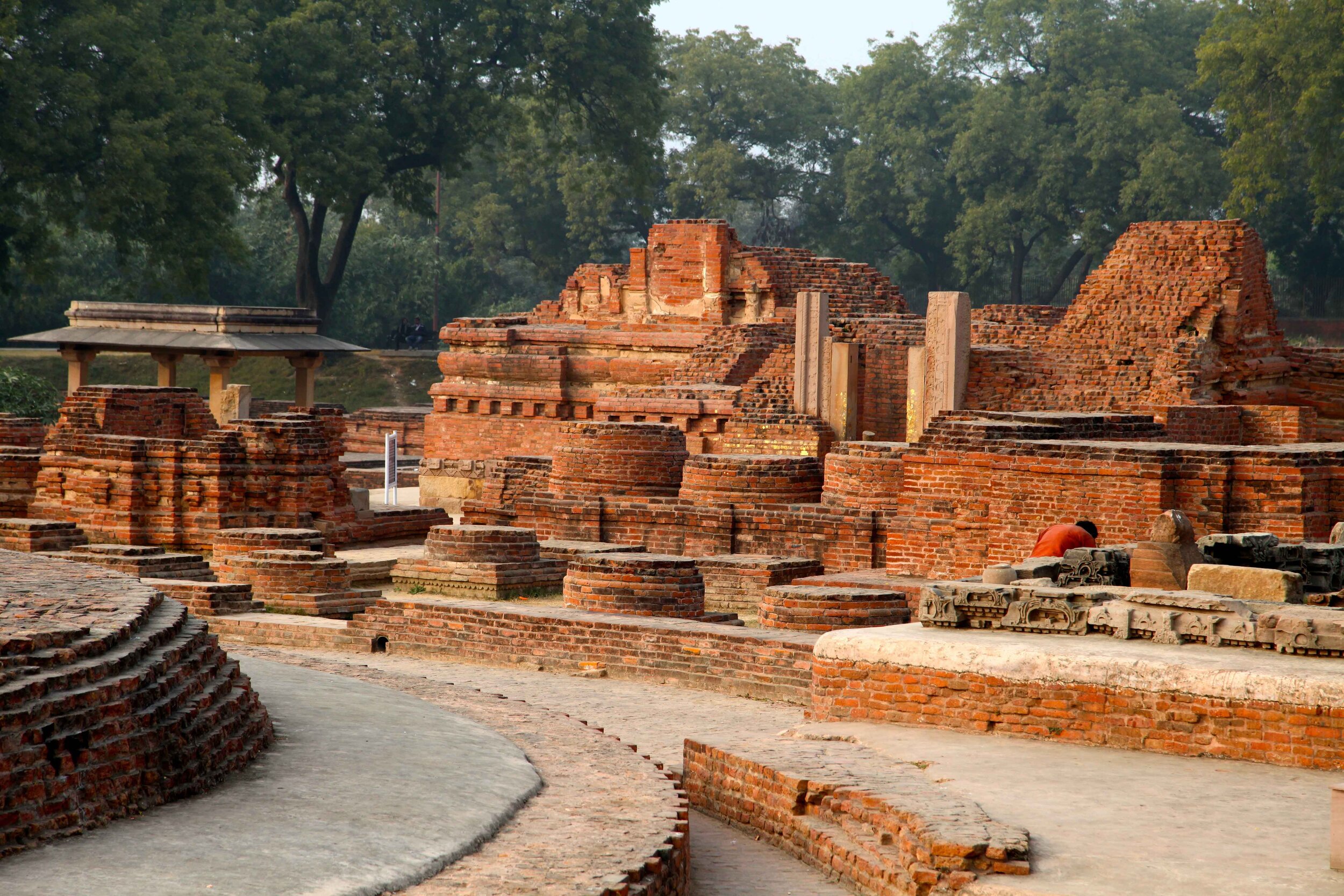
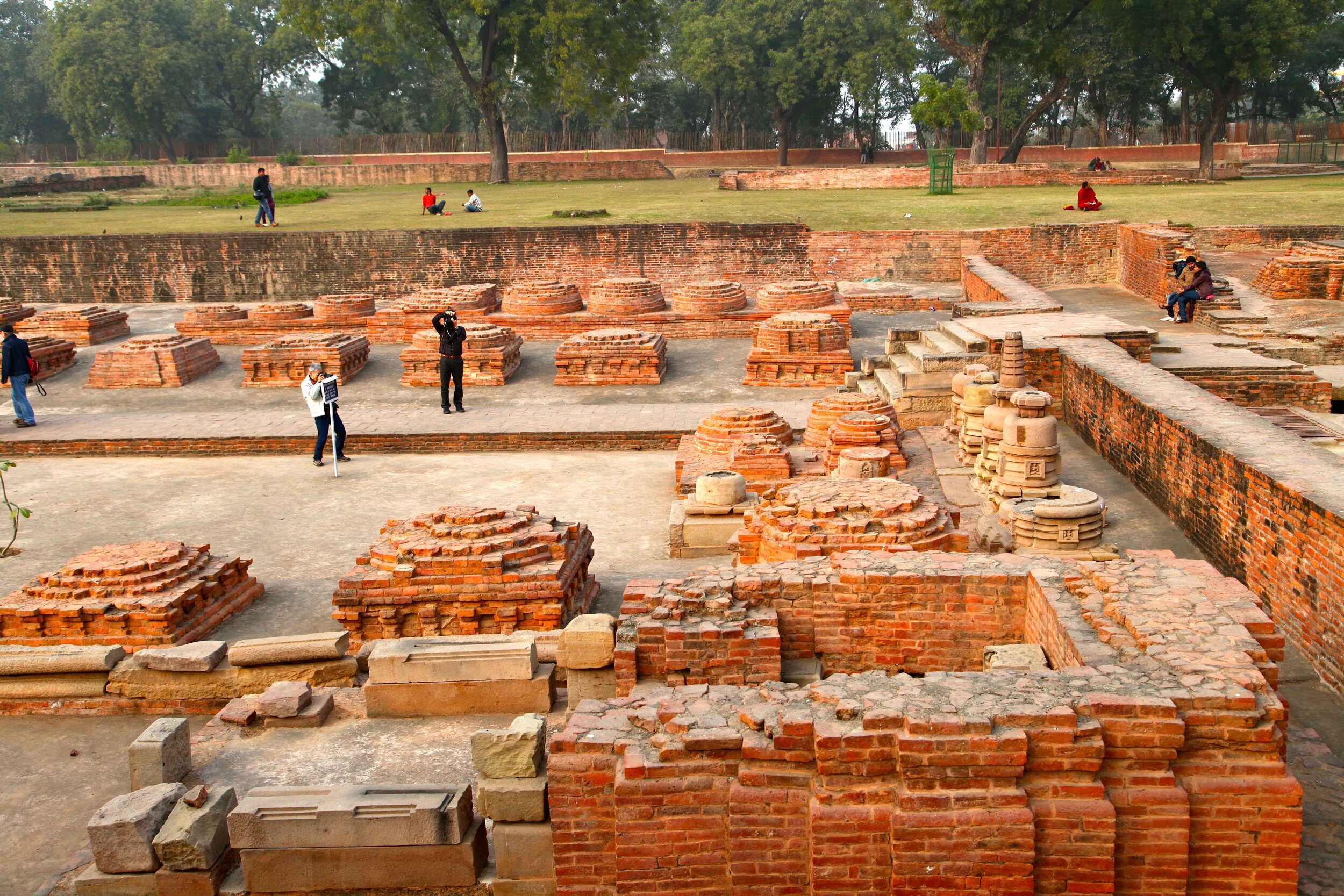
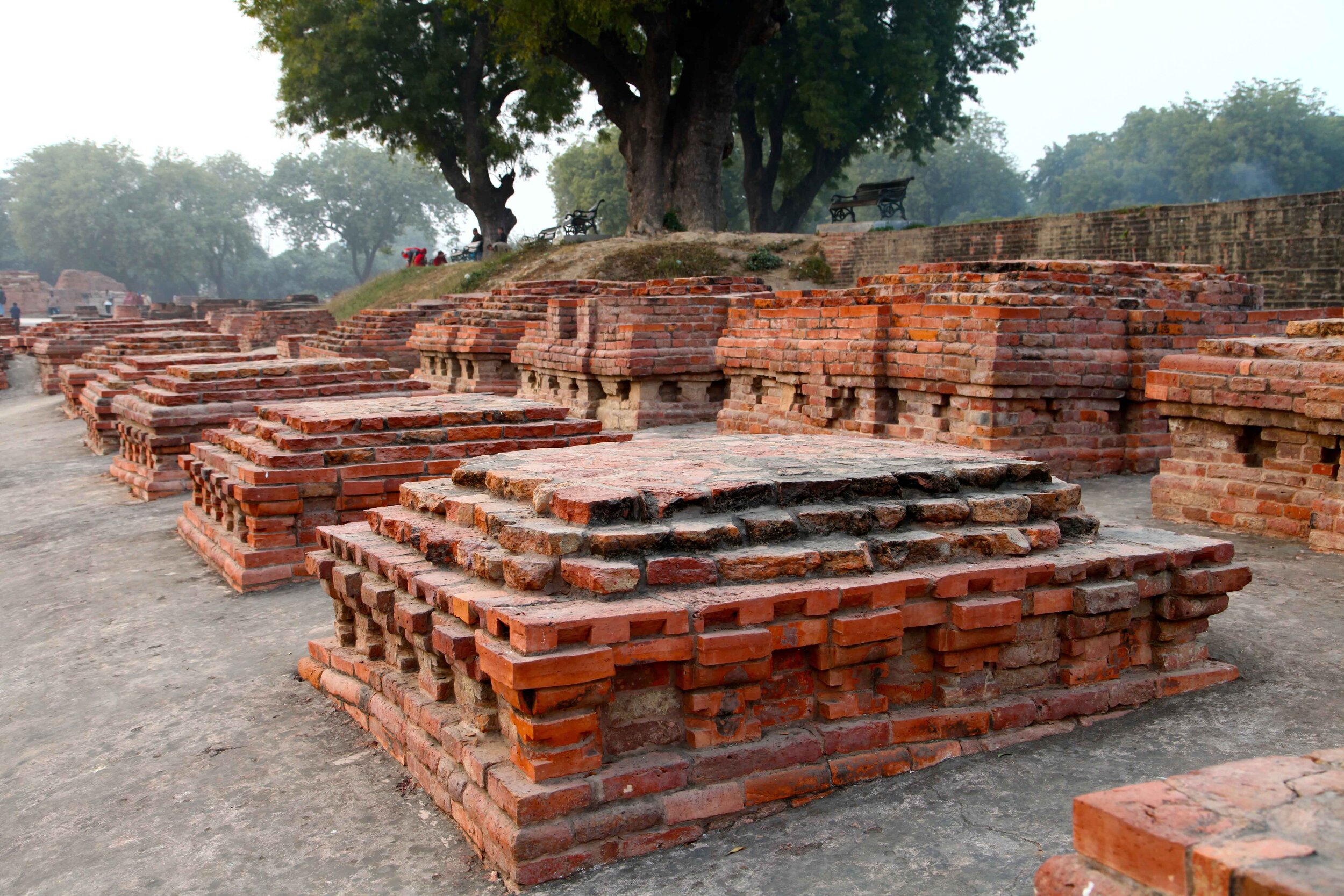
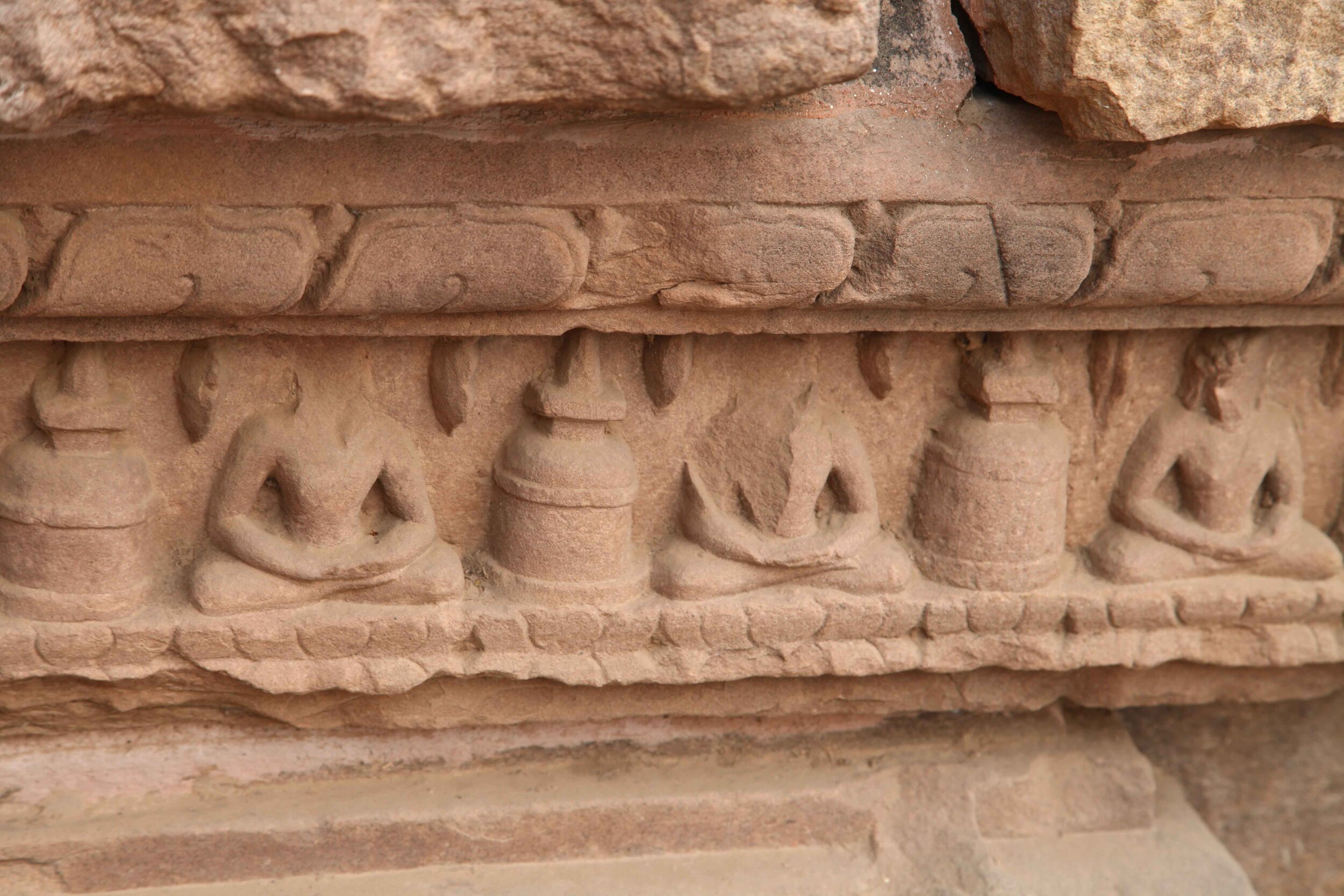
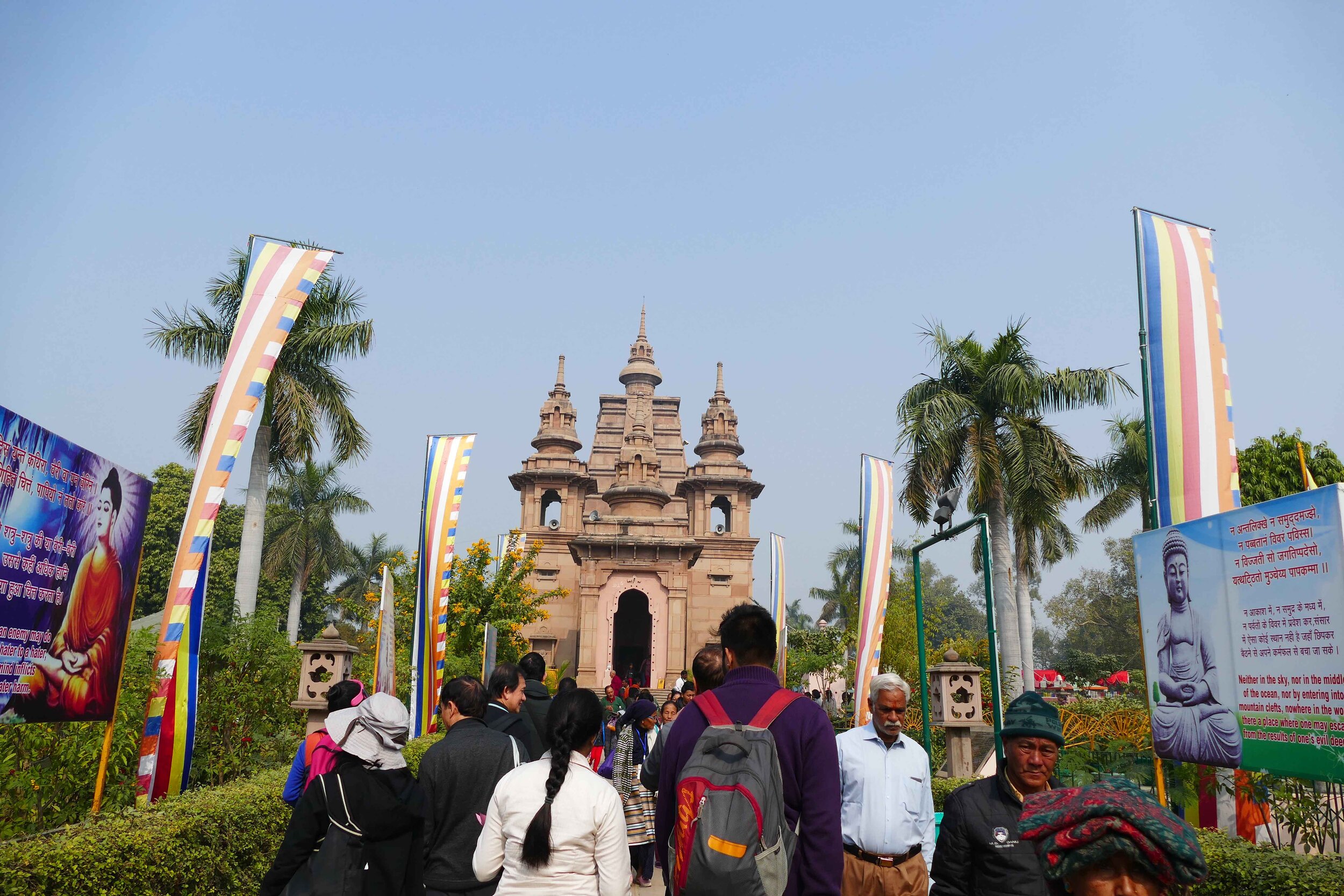
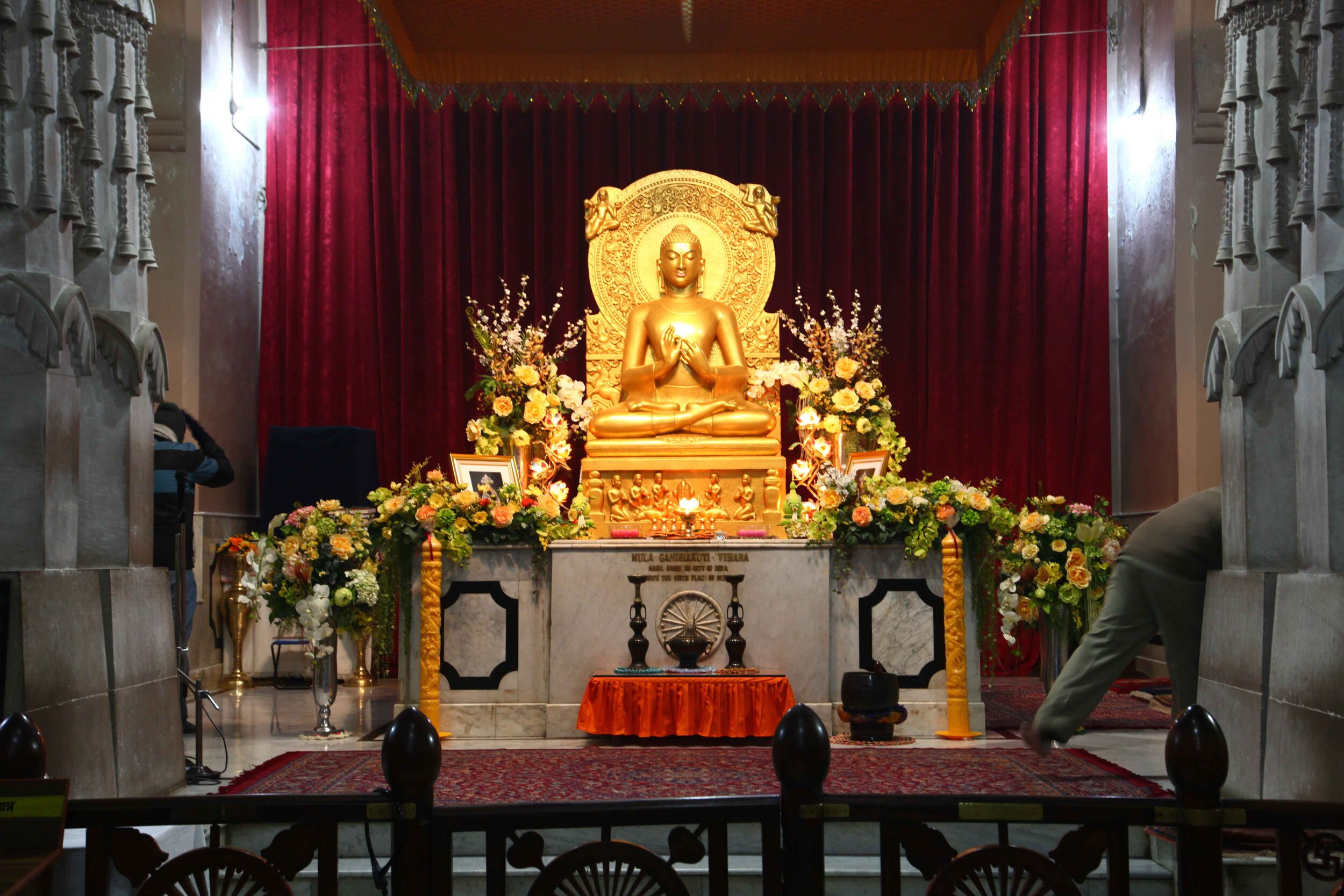
Sutta delivered at the Deer Park at Isipatana
According to Mahāvagga I.6, this was the Buddha’s first discourse after his awakening.
This discourse is also known as the Anatta-lakkhaṇa Sutta, the Discourse on the Not-self Characteristic. According to Mv I, this was the first of the Buddha’s discourses during which his listeners became arahants.
Learn more
Noble Warrior : A Life of the Buddha Compiled from the Pāli Canon, by Ṭhānissaro Bhikkhu & Khematto Bhikkhu. (revised Aug. 26, 2020) A biography of the Buddha using passages collected exclusively from the Pāli Canon. The translated passages are interspersed with a minimum of explanation, allowing the compilers of the Canon to speak for themselves. Here is the chapter on the Buddha spreading the Dhamma.
























